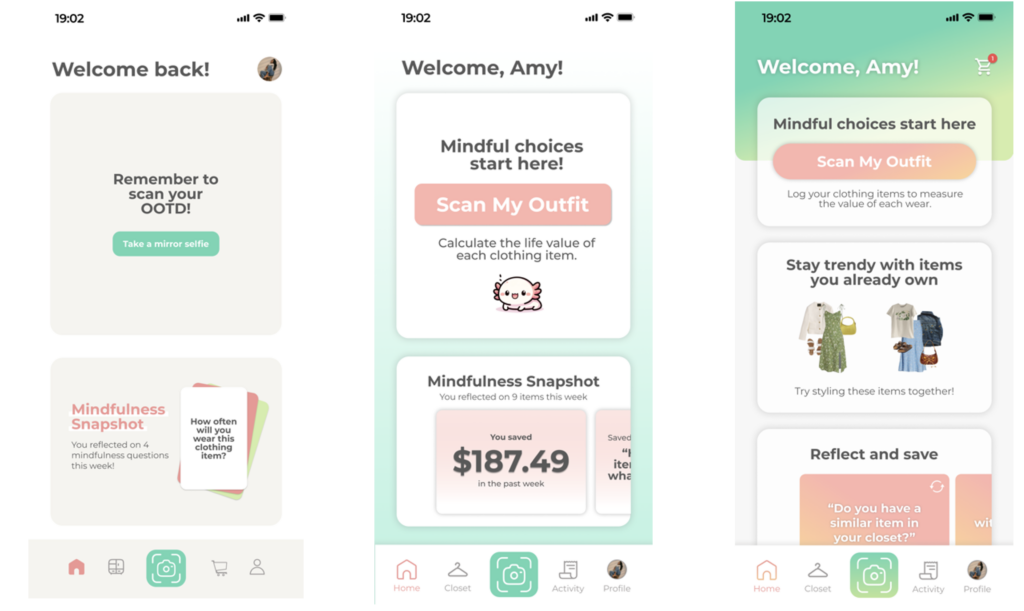Before this class, I thought I knew what brainstorming was. I had already taken CS 147 and thought that post-it notes and voting is brainstorming. I realized that brainstorming and ideation actually persists throughout the entire project – especially when we are constantly working to improve and grow our projects to be more aligned with the needs of the user. After reaching a milestone in the project, I would feel as if I took another 10 steps backwards because we’d discover another usability or ethical violation that required a longer process of testing and discussion. Towards the end of the quarter, I became more comfortable with this process and realized that each gap or unintended influence we unveiled, actually helped our project grow even more.
From CS 147, I also believed that everything the interviewee shared with us verbally is truth. I learned through the baseline study and intervention study that what participants say is not necessarily what they will do nor how they truly feel. Regardless of how much autonomy we hope to give the participant, there will always be a sense of hovering from our team and society that influences how honest they are with their actions and words.
While working with my team on our project, Mirror, I worked on the home screen and onboarding – both are very influential pieces of the app especially since they would determine whether the user would continue using our mindful shopping tool or not. I went through three iterations of home screens and two iterations of the onboarding flow, and although it was quite stressful, I feel I learned the most through this experience. These iterations resulted from many late nights trying different designs on figma with the feedback from my team members. At the end of it all, I learned that everything we decided prior to actually creating the figma prototype will most likely change. For example, the colors on our mood board seemed to work so well together, but when applied to figma, they clashed and were too bright. The sketches we created with the axolotl mascot were also cute on paper but became slightly jarring when digitized on figma (we had to remove the nostrils).


Other than the visual design aspects of the project, our team also spent a long time discussing the ethical considerations of our mindful shopping intervention. One valuable realization was made while brainstorming for our ethics creative project. We realized that while our intervention creatively frames overconsumption in the life value or cost-per-wear, it also didn’t consider why people may have low usage of certain items. For example, the reason why someone doesn’t wear their jeans as often may not be because they bought it impulsively, but because the jeans are no longer comfortable for them to wear. The same can be said about any other clothing item. Yet, the shaming or forced reflection in our intervention may make our user feel even worse – this is not the impact we hope to leave. However, there is one aspect that we felt very strongly about, and that was to create an intervention that would still allow shoppers to indulge in the shopping activity that brings them so much satisfaction. We hoped to encompass preference-hedonism by allowing users to still experience the shopping and browsing desires that they have – just adding more mindful reflection to it.
After taking this course and actively engaging and conversations that challenged my prior beliefs, I now believe that there is so much power in asking study participants to engage in an action rather than just telling us what they think. Most importantly, interviews are not created as a means for us to dig out as much information as we can – it is more a conversation of understanding and learning. In my upcoming HCI courses, I will keep this in mind because I’m always a very stressed note-taker. Rather than trying to jot down every point, the experience for both the interviewee and interviewer can be more strongly enhanced by a common ground of understanding and genuine listening.



